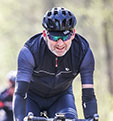Until I got there, I hadn't realised quite how long the journey to Roubaix was.
Oh sure, we set off for the Paris - Roubaix Challenge with everyone else early on Friday morning, with adapted bikes, a mountain of rice cakes and gels, a carful of animated chatter and a dash of trepidation. We spotted the cars laden with bikes at the tunnel entrance, we laughed at how many vans full of slightly-too-skinny young men there were at every service station. We counted the UK registration plates on the streets surrounding the velodrome and we wondered if any nations other than the Brits were stupid enough to enter this, the most stupid of sportives.
As we queued to get our event numbers on the infield of the newer, indoor velodrome, a senior and a junior rider lap, lap, lapping the track around us, we asked ourselves why we hadn't done this before. So close to home, just a short hop over the Channel, this most mythic and fearsome and legendary of races, where stories and horror and facts and fiction have intertwined for over a hundred years.

See? I'm at it too. Actually, that last bit isn't quite true, we weren't complete greenhorns.
We had an interloper, one amongst us who had some experience of the pavé. Not much experience though... in fact, about two hundred metres of it. Rich, the intrepid leader of our merry band of four, had a crack at Roubaix the year before.
Well, perhaps just the 'c' of crack, as at the very start of the very first section of pavé he rode (the mighty Arenberg, of whom we shall speak again later) his rear derailleur exploded through his back wheel, leaving him stranded some 50 kilometres from home armed only with a busted bike, some very rudimentary French, and a whole heap of unfinished business.
So here we were: three novices, and one nearly-novice with a grudge. Be afraid, cobble-goblins, be afraid.
Like all Roubaix novices, we had long since embarked on another journey. Kit had been planned, options considered. Tyre size and choice? Tubes or tubeless? Double wrap of bar tape or gel inserts? Both? Gravel, CX, or road bike? Or - surely sacrilege - MTB? How many spares would we need to carry?
We consulted the small cottage industry of blogs, websites, videos and books all advising the cobble-newbie how to prepare, how to get fit, how to avoid crashing, how to minimise the pain. All adding to the myth, the fear factor, the anticipation. We've all trained for events before, but this was... more.
Had we considered upper-body strength training? They say vibrations from the cobbles accentuate any wobbles. Better get strong.
I posted a photo of my Roubaix-ready bike on Twitter and was promptly told to swap my bottle cages for some steel ones as the plastic ones would surely break. Words of kindness framed with the dark warning that 'it really is very, very bumpy indeed'. Heads swimming with information, legs brimming with fitness, bikes and backs and thighs tautened and tightened and tweaked, we were ready, dammit.
These days there's a few different route options depending on your levels of intrepidness / optimism / foolhardiness. We went for the option of medium stupidity, the 145km route that indulges 'only' twenty of the twenty-nine sectors of cobbles, but that starts and finishes from Roubaix and thus avoids the 5am bus to the start that is required for the 175km maximum-cobbles route (I'm glad to say that there's no option for the full 250km pro route, presumably on some sort of Catch-22 basis, in that anyone insane enough to actually want to do it would therefore be automatically refused entry on grounds of insanity).
We rolled from the Velodrome (the new one, again) in five minute intervals of whoever could muster the courage, roared on by a Frenchman-with-microphone of worrying bonhomie. There then followed a lovely little run down to the first secteur, with plenty of time to avoid working on the front as much as possible, marvel at the locals' ability to immediately form a perfect echelon at the merest puff of a crosswind and to enjoy the usual, but alien sensation of polite respect from the passing cars, as sure a signal as riding on the right that this sportive is not on UK roads.

All the while we passed dozens - no, scores... no, possibly hundreds - of Bora-jersey clad women, all of whom seemed to be undertaking the short route upon MTBs, and we wondered at their provenance. Perhaps a work trip, or just a gathering of the Sagan fan club, the Roubaix equivalent of the Take That fan club camping outside Mark Owen's house in the 1990's, but with added punctures.
As we rode, however, something nagged at us. The roads got narrower, and as we passed through the classic flat farmlands of the region I recalled how Roubaix (the race) was nearly ruined by the post-war drive for modernity. The local mayors saw the cobbled farm tracks as an embarrassment, a sign of old, outmoded rural ways, and ordered them covered by lovely, smooth, modern metalled roads, the better to show that their towns were part of France's brave new future.
But as we passed over these monuments to change, here and there the past poked its head out. Cracks and potholes revealed a glimpse of shockingly jagged pavé lurking just below the surface, like malevolent rocks beneath smooth seas, and I knew that sooner or later we would run aground.
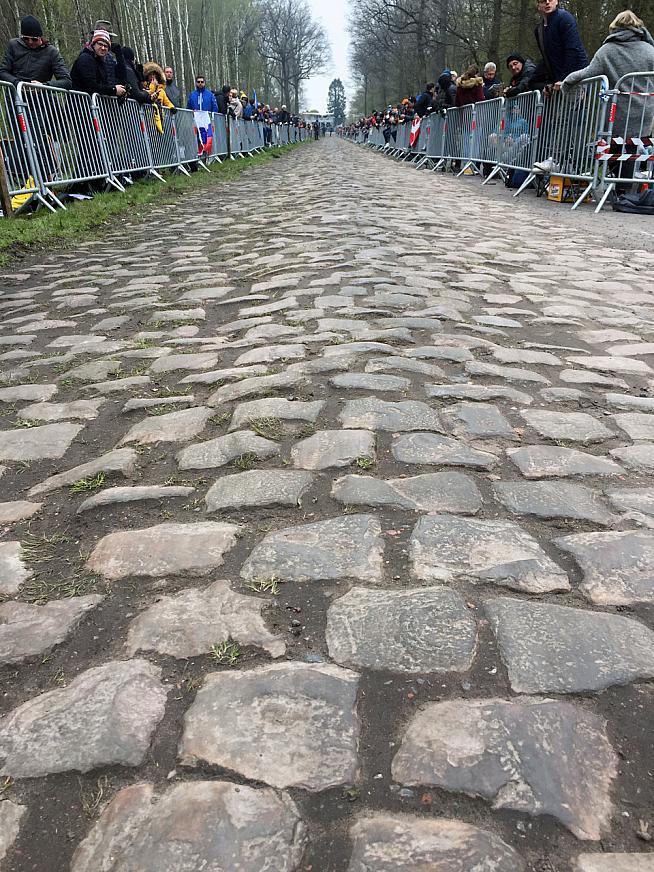
Now, if you were to ask the average cycling fan who was the person most responsible for the continued legend that is Paris - Roubaix, the chances are that the name of Jean Stablinski would not be their first to their lips. But Stablinski's name looms large over the race's history (and over the newer Velodrome, which bears his name), for it is he who first recommended to the organisers that they change the route to include a hitherto unknown section of pavé through the Arenberg Forest (the legend has it that he was a miner before he became a professional cyclist, and rode the track each day to the Arenberg mine).
Fortunately for Stablinski, he was a far better cyclist than he was a miner, becoming World Champion in 1962. But I'd also argue that Stablinski was the cleverest cyclist in the peloton, because crucially he only recommended the Arenberg after he retired, meaning he never had to race through the bloody thing.
It would also seem that the modern-day organisers share Stablinski's sense of sadism, because - perhaps to punish those puny cyclists who shy away from the '5am-start-and-twenty-nine-secteurs-of-pain' route - the 145km riders face the dreaded Arenberg first. Now, if you are like me you'll have heard many a rider who has braved Arenberg telling you how nasty the cobbles are, you'll have seen years of crashes on TV, and read yards of copy about this hallowed and hated secteur.
And it's all true. Nothing can prepare you for just how oh-my-god-what-the-hell-you-can't-ride-a-bike-on-that the first few hundred metres are, and I clattered and banged my way at shockingly slow speed cursing the (sacrilegious) MTB riders who whooped and swooped past me, marvelling at my own stupid folly and hating on Jean-bloody-Stablinski in equal measure.
Fun? Not so much, and genuinely scary at times as I struggled to control my wildly bucking bike.
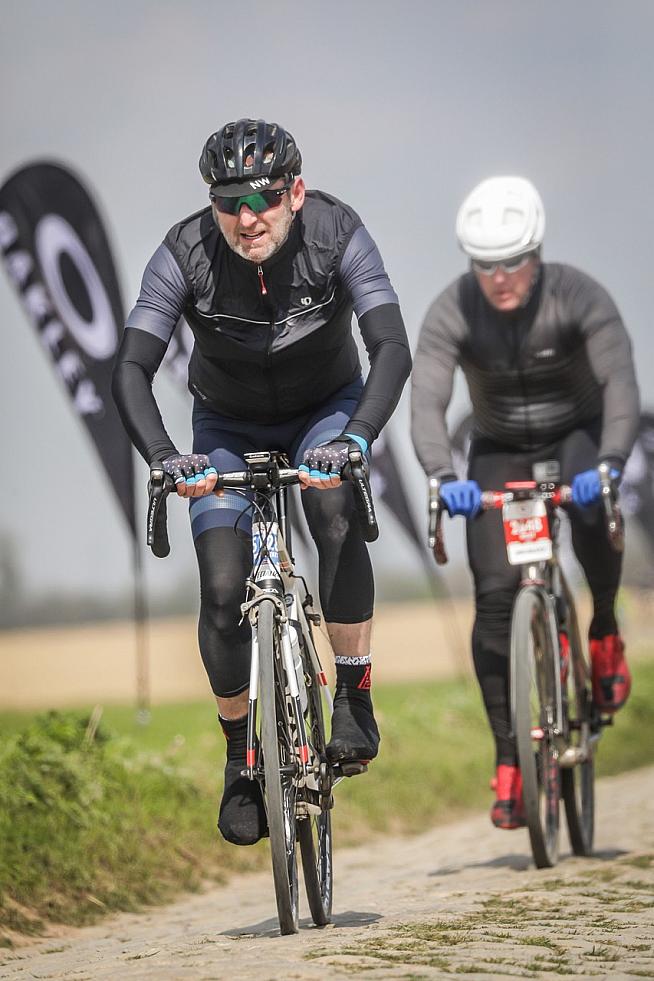
Our group had agreed a plan before the event: cobbles at our own pace, regroup at the end, recover before the next secteur. Rinse and repeat. I rejoined the others feeling chastened. I've watched Roubaix every year since my early teens, my all-time favourite race. Before we went to France I updated The Handmade Cyclist website (our cycling design business) and realised that Roubaix features in our products and prints far, far more than any other race.
It's a massive reason why I ever started cycling in the first place, it is a part of me - and I had waited a long, long time to be a part of it. I had raced through Arenberg many times in my dreams and it had never been quite so slow, so scary, so amateurish as this. My arms cramping from my death grip on the bars, I let some more air out of those carefully considered tyres, jettisoned my slippery long-fingered gloves and vowed optimisitically that the rest of the ride would be better.
Fortunately, the secteur that immediately follows Arenberg is chalk to the Forest's cheese (perhaps deliberately, so the organisers can avoid the challenge of bussing hundreds of emotionally-scarred refusenik cyclists back to Roubaix). Or maybe it just seems that way, so horrible is the secteur before. We positively flew through it, getting the first glimpses of the mythical 'float', the sensation when you ride fast enough that the cobbles smooth out beneath your flying wheels ('smooth' is a relative term here, naturally). Buoyed and braver, it began to appear that the ride might be fun after all.
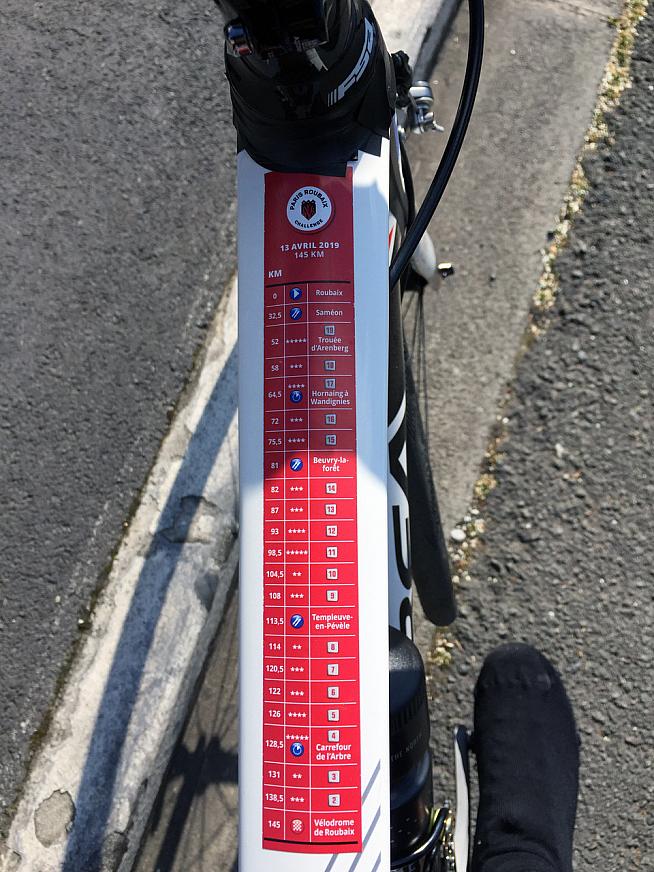

And so it proved. With each secteur our speeds increased, we began to get the hang of handling the bikes on the cobbles, weaving round slower riders, hopping on and off the verges. The names of the sectors so immediately familiar as they passed by - Orchies, Mons en Pevele, Carrefour - and other, finer details long lodged in our brains from watching the race over the years: a faded, painted advert on the side of a building, a high street, a road bridge here (the closest thing that passes for a hill on this event), a rail crossing there.
The kilometres clicked by, fatigue creeping, aches and pains spreading from hands and feet to shoulders, neck, back. Secteurs ticked off, one by one, until finally we picked our way through the pre-race traffic and entered the famous, crumbling old velodrome.
Crowds line the entrance, cheering you in, and the vista widens to reveal riders milling around, dazed and triumphant, lying on the infield and posing for photos on the track. The obligatory sprint finish followed, then a skidding halt to receive our (actually very classy) finishers' medals.
While all around us the usual sportive finish line scenes were played out - beers were procured, photos taken, phone calls made to family, and groups of riders chatted about the trials and triumphs of the day - I had a sense that something different, more magical, was at play. There's something about this event, more than any other sportive, that hits home emotionally.
As cyclists we are all party to the unique privilege of being able to enjoy our sport in the same venues as our heroes, whether riding up l'Alpe d'Huez, or the Tourmalet, or even the more prosaic roads of Box Hill. We ride in the wheel tracks of the greats.
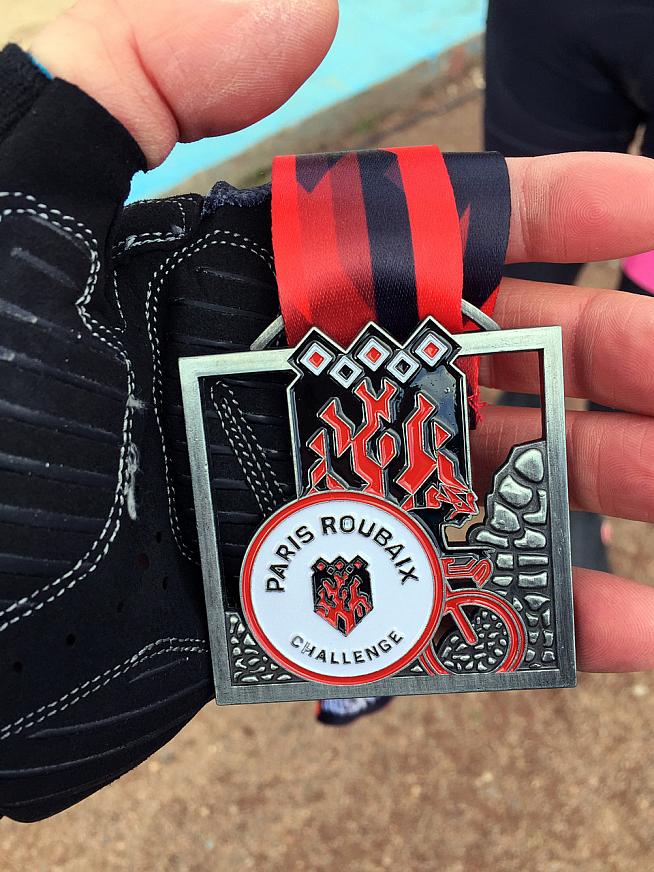
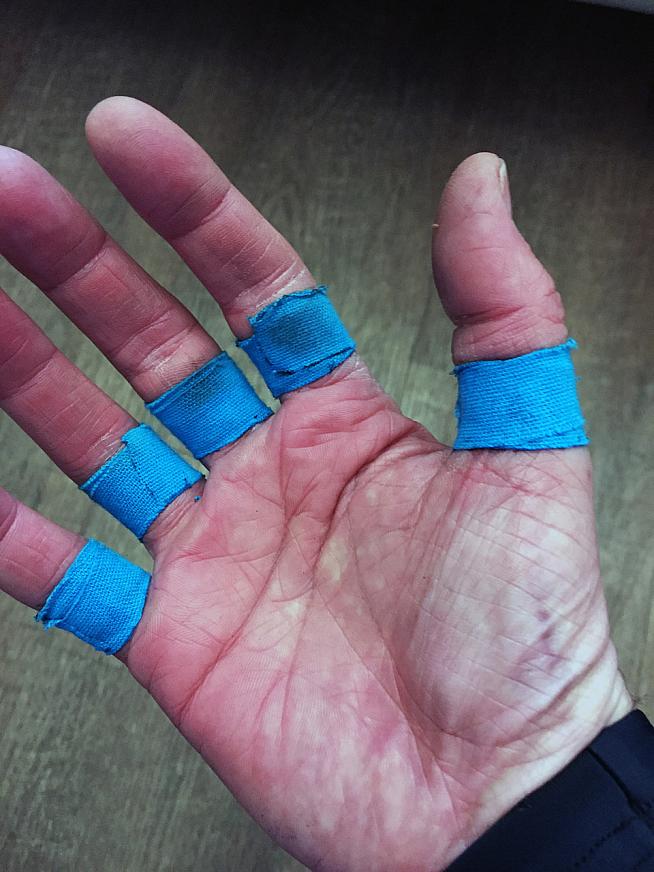
It was this, perhaps more than anything, that made the Paris-Roubaix Challenge such a profound experience for me. I realised that this race, perhaps more than any other, had shaped my views of cycling. Of what it means to suffer, what it means to overcome.
Roubaix gave me my heroes. The moments and places where those heroes were forged are etched in my mind, viewed and replayed over the years. To ride this event is to experience just for an instance what it took for those heroes to win and to share a fraction of their pain, their hope, their glory. To share that feeling where the aches and fatigue and suffering give way to the satisfaction of finishing.
Not to win, just to finish. Triumph enough.
That, surely, is why we follow this beautiful sport and why we ride. Why we get up early and train hard, why we pore for hours over book, videos and magazines. Why we, too, put ourselves through the ridiculous demands of this most ridiculous of races. To be - even if just for one day - part of the history of the greatest bike race of them all. To finish a ride that, for me, started thirty years ago watching Sean Kelly and the heroes of my youth.
It's a long journey to Roubaix.
0 Comments

